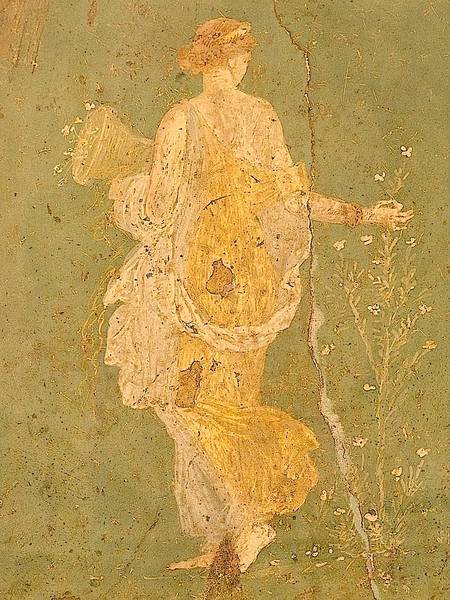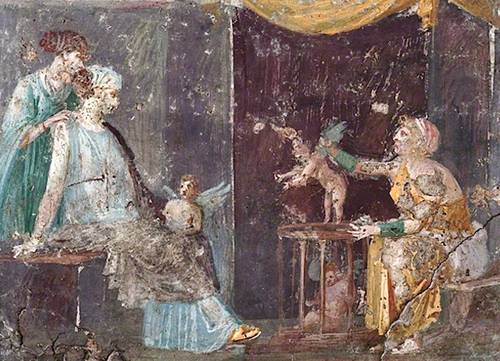
The Sorrento peninsula begins at the modern town of Castellammare di Stabia, on the southeast shore of the Bay of Naples. It takes its name from its 9th-century castle and from the ancient city of Stabiae, which was swallowed up by the eruption of Vesuvius in AD 79. Pliny the Elder met his death on the beach at Stabiae, suffocated by toxic fumes from the volcano. On the plain of Varano and in the hills above, overlooking the water, are the remains of two Roman villas. The Villa Arianna dates from the 2nd century BC. It is not known how large it was at its full extent, as many of its clifftop rooms have collapsed, but surviving remains show a sumptuous, spacious building, including the large palaestra. Some of the surviving wall decoration and floor mosaics are very fine. In the main triclinium was a fresco of Ariadne, abandoned on Naxos by Theseus, which gave the villa its name, Arianna. Finest of all the frescoes are those from the cubicula, detached in the 18th–19th centuries and now in the Archaeological Museum in Naples. One of the most interesting is the Cupid Seller, depicting two women, one young, one middle aged, confabulating together while an old crone at their feet (a procuress?) displays her wares, tiny cupids trapped in a wooden cage like chickens at a market. The image fascinated artists of the Neoclassical age, and several versions of it were produced. More famous still, and apparently without any sinister subtext, is the lovely Flora, a young girl shown with her back to us, delicately gathering spring flowers.

Stabiae and Naples are covered in Blue Guide Southern Italy.






